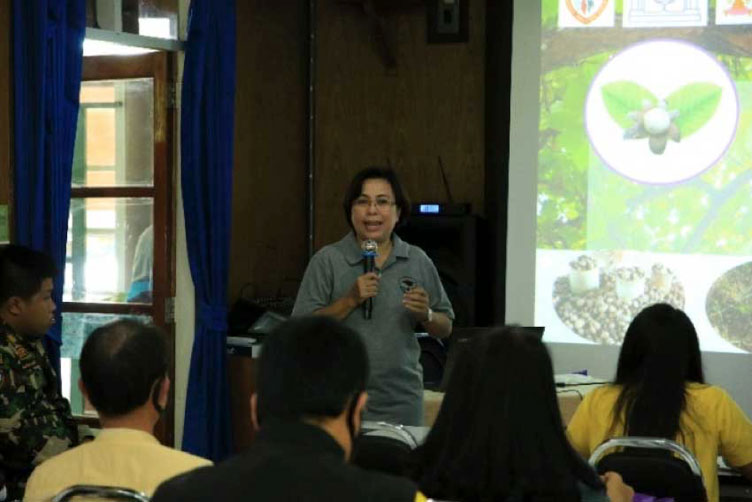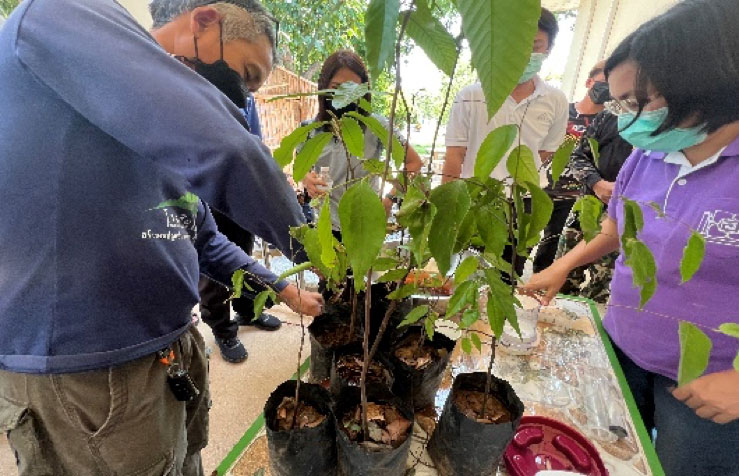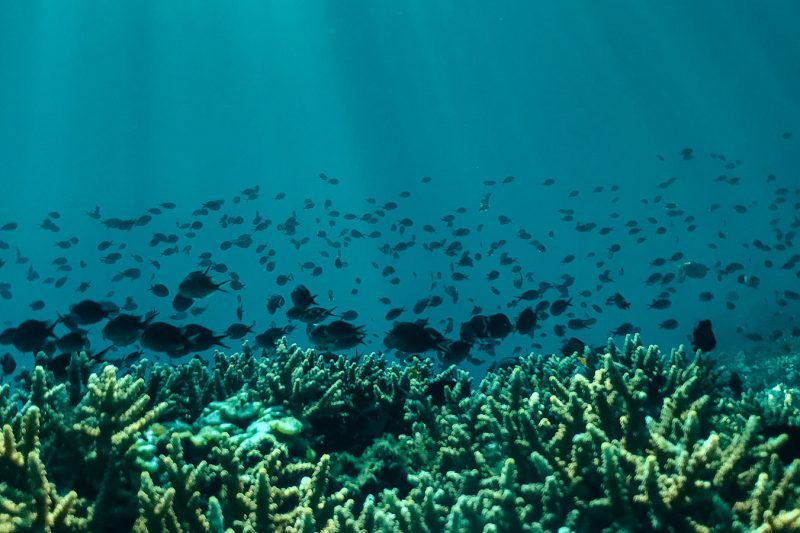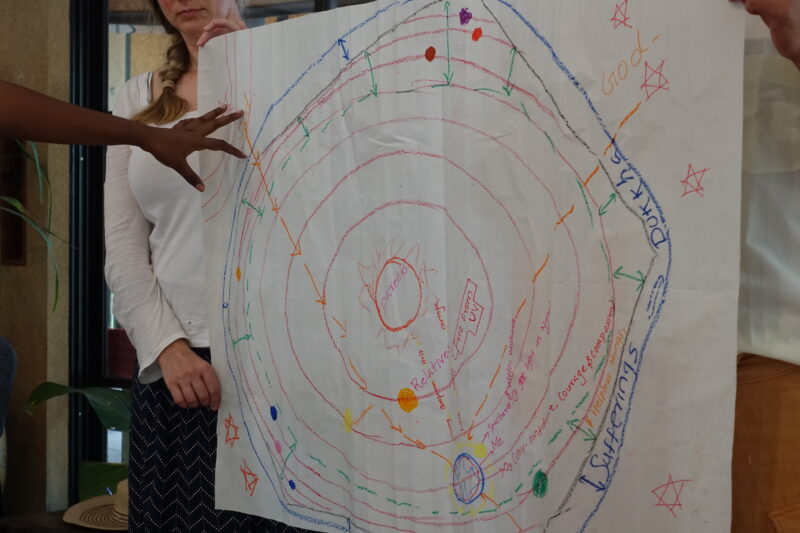Mycorrhizal technology for creative reforestation and sustainable wildfire suppression for reforestation
Regardless of the decline of the Thai forest in the past two decades, the Ministry of Natural Resources and Environment reports that 31-33 percent of the country will remain green.
Thailand’s 20-year national strategy prioritises forest protection. The initial goal is to expand its forest areas to 40% of the gross national space, especially with its 10,000 socio-ecological forests within and outside conservation sites. These forests cover 7,870,000 Rai, or 7% of the national forest. Thailand’s gross national forest is 102,484,072.71 Rai in 2018-2019, or 31.68 percent of its land. Wildfires, caused by dry conditions or illegal burning, are a major problem in Thai forests. Kasikorn Research reports that 170,835 Rai of Thailand’s forests have been burned from October 2019 to April 2020, with more than three-quarters in the North.
Poverty and local beliefs that burnt forests will produce mushrooms cause illegal forest burning.This belief has haunted Thai forestry for decades. Illegal forest burning causes global warming. Illicit wildfires burden reforestation by removing natural microorganisms, nutrients, and humidity, and they increase PM2.5 in the atmosphere, harming locals’ health.
Source: NSRF THAILAND
[ https://www.youtube.com/watch?v=dtTK1B9s1D0 ]
The damaged green space needs to be brought back to life, so the first step is to fix the ground soil. As an expert on microorganisms in the soil, Chulalongkorn University’s Department of Botany in the Faculty of Science has come up with a good way to revive the local forest. In 2005, the Local Development Program was the first to study mycorrhiza in the Deciduous Dipterocarp Forest so that the watershed forest in Nan province could be brought back to life. The scientists tried out different kinds of Mycorrhiza and other local microorganisms mixed with soil and Nan’s local Botanics. Gurjan, Taengwood, Hairy Keruing, and Pluang Tree are just a few examples.
This method of reforestation is good for the environment and will last for a long time. With the success of this Mycorrhizal technology, Chulalongkorn University has broadened its positive results by providing young sprouts to multiple organizations in Nan province for further growth of the watershed forests. In addition, at least 3,000 Rai of local forests will be receiving such improvements through the establishment of the Chula-Saraburi station in Amphoe Kaeng Khoi in Saraburi province. Funded by theNational Research Council of Thailand (NRCT), the pilot project of ‘Mycorrhizal technology for Dipterocarpaceae forest building’ was set up as a provider of educational workshops and a knowledge hub for state entities and local participants in 2017.
Source: Sustainability Expo
[ https://www.youtube.com/watch?v=HoHr8uaIBB0 ]
Later in 2018, Chulalongkorn University strengthened its Northeastern and Southern expertise. Hong Kong’s Mushroom Initiative Limited funded the Mycorrhizal programme for Thai reforestation. The Native Species Reforestation Foundation held workshops for government agencies and locals in Nong Bua Lamphu province, including Tambon Uthai Sawan, Amphoe Na Klang, and Tambon Klong Yang, Amphoe Koh Lanta in Krabi province. The Mushroom Initiative Limited, Hong Kong expanded the programme to 10 areas in Thailand and 1 area in Lao People’s Democratic Republic to adapt to future disasters. Facebook and websites make knowledge easily accessible.
During the program’s three-year run, with proper humidity and lighting, the seedlings have grown beautifully over the past 3 years. Since 2019, the Anandamahidol Foundation and the Department of National Parks, Wildlife, and Plant Conservation have supported the operation to resolve the PM2.5 crisis in Northern Thailand. The Puff Ball Mushrooms Innovative Program for Healthier Forest and Profitability has raised local awareness of wildfire hazards in Amphoe Li, Lamphun, and Mae Ping National Park. Mushroom growing opportunities for forest restoration and economic income have also influenced locals to conserve forests. Chulalongkorn University is expanding its positive trend to the Thai Ministry of Defense’s Second Army Corps. Nakhon Ratchasima’s Northeastern Sufficiency Economy Learning Center developed Mycorrhizal technology for agriculture. A decade of environmental revitalization by Chulalongkorn University and other groups has strengthened local forest plantations and reduced reforestation time from centuries to 30-40 years. This follows the 20-Year National Strategy’s goal of 40 percent green areas. The approach can be used anywhere in the world after wildfires.
Mission to restore degraded forests “Ban Ko Sandbox” increases the efficiency of dipterocarp forest restoration in Thailand.

“Using mycorrhizal technology to increase efficiency of endemic forest restoration in Thailand” has coordinated with “Ban Ko Sandbox” regarding conservation and restoration of degraded forests caused by wildfire, including planting endemic forests using mycorrhizal technology.
The project aims to convey knowledge, build a culture of forest conservation participation, and create sustainable cohabitation between locals and the forest through various activities.
- Lecture and practical training on “Innovation of barometer earthstar to reduce wildfire and smog; Reforestation as a way to earn a living” with the Ananda Mahidol Alumni Club and Mae Ping National Park, Lamphun Province. The activities aim to educate the local community and related agencies about mycorrhizal technology, especially barometer earthstar and other wild mushrooms that depend on endemic forest plants.
- Mae Ping National Park officials, locals, and government agencies in Li District, Lamphun Province reforest pilot areas with mycorrhizal technology to accelerate forest restoration in Mae Ping National Park. The project is a success and establishes sustainable forest management. It can be used as a prototype of restoring conserved forest for other national parks in the future by planting additional endemic plants into such areas to create a variety of endemic plants, especially the dominant species of trees which are members of the deciduous dipterocarp forest.
- Building a demonstration plot of endemic plants to increase food security and sustainable income; the prototype plots are in Ko villagers’ 3 Rai area experimenting with agroforestry farming. Cultivation of endemic forest plants used as food and income by area owners, such as barometer earthstar host plants Dipterocarpus tuberculatus Roxb., Shorea obtusa Wall., Shorea siamensis, Dipterocarpus obtusifolius Teijsm., etc. Melientha suavis, bamboo, and medicinal herbs, along with grapes, asparagus, durians, etc., help villagers have stable and sustainable incomes. This reduces forest encroachment and park disturbance.
- Activity to restore degraded community forests with mycorrhizal technology from barometer earthstar. The activity aims to restore the community forests of villages near Mae Ping National Park’s forest areas. Mae Ping National Park officials and Ko villagers have applied barometer earthstar mycelium leavening agents to host plants in the community forest, such as Dipterocarpus tuberculatus, Shorea obtusa, Shorea siamensis, etc.


In 2021, the “Integrated Project on the Use of Barometer Earthstar for Forest Restoration and Reducing PM 2.5 Caused by Forest Burning in the Boundary Area of Mae Ping National Park, Lamphun Province” was also implemented with support from the National Research Office (NRCT), the Ananda Mahidol Alumni Club, and Mae Ping National Park. Reforestation and restoration of forest in Mae Ping National Park areas, implementing Section 64 under the National Park Act B.E. 2562, using 15 Rai of endemic plant seedlings applied with barometer earthstar mycelium leavening agents, and expanding the network to youth groups “La-On-Kha-Huk-Tinkerd” The group joined the reforestation coalition to strengthen the forest conservation and restoration network, monitoring wildfires with park officials and community agencies.
Additionally, in order to achieve in accordance with the 20-year national strategy (2017–2036) Thailand’s reforestation and restoration and by participating in the COP26 conference in Glaskow, Scotland. Thailand announces important targets to be carbon neutral (Carbon Neutrality) by 2050 and net zero greenhouse gas emissions (Net Zero) by 2065. Therefore, the transfer of knowledge on the use of raektomycorrhiza to restore native forests is a constant necessity. Through the following activities;
- Training and operational activities: “Innovative cultivation of wild mushroom mycorrhiza in natural models, Surin Province” sponsored by Surin Rajabhat University
- Training and operational activities: “The use of oframicorrisato increase the efficiency of Thai reforestation” was supported by the 38th Military District, Nan Province, and the Regional Learning Network Center
- Reforestation activities at Wiang Sa district, Nan province by Chulalongkorn University students enrolled in local reforestation are supported by student affairs and the Department of Botany, Chulalongkorn University, Santha Subdistrict administration organization and local forest restoration foundation.
BY
Faculty of Science, Chulalongkorn University
Related articles:
Related SDGs
Others









